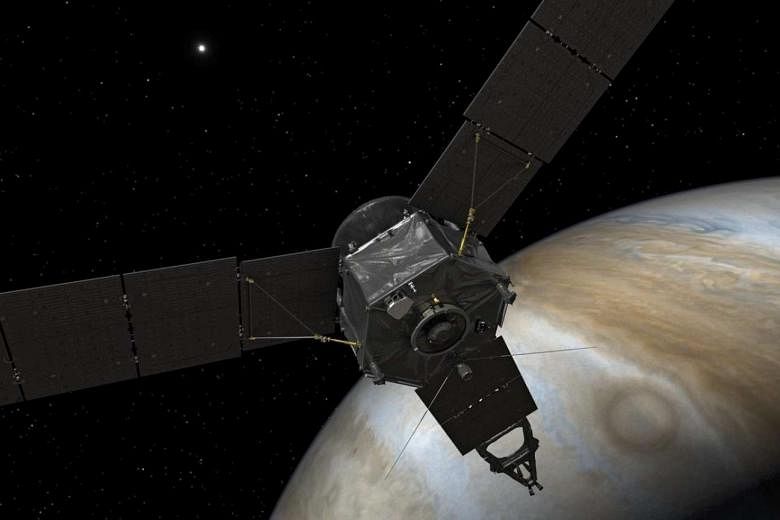Little is known about Jupiter beneath its colourful cloud stripes. The Juno spacecraft will attempt to answer several questions perplexing scientists once its 20-month science mission begins. These include:
WHAT'S UNDER THE SURFACE?
Juno will be in an orbit passing over Jupiter's poles, providing a first close look at these regions. With repeated close passes over the cloud tops, the spacecraft will measure microwave emissions, the gravity field and the magnetic field, offering glimpses into what is deep inside Jupiter.
IS THERE WATER?
Jupiter has greater concentrations than the sun of most of the heavier elements such as nitrogen and carbon, but oxygen is scarce. Thus, scientists expect that oxygen atoms have each been tied up with two hydrogen atoms to form water molecules.

The measurements collected by Juno of microwave emissions emanating from Jupiter will tell both the temperature and how much water there is, because water molecules absorb microwaves.
DOES JUPITER HAVE A ROCKY CORE?
Measuring Jupiter's gravity field will reveal the distribution of mass within. If there is a rocky core, planetary scientists will have to explain how rocky bodies formed that early in the solar system. If there is not, then the hypothesis is that Jupiter formed out of the collapse of a gas cloud, much as the sun did.
WHAT IS METALLIC HYDROGEN?
Jupiter is made up almost entirely of hydrogen and helium, the two simplest and most abundant elements in the universe. Cool these two gases and they change to a liquid. Inside Jupiter, hydrogen is believed to undergo another transformation, to a metal. Scientists have not been able to create metallic hydrogen on Earth.
By studying Jupiter's magnetic fields, probably generated by currents of metallic hydrogen, scientists will get hints about the properties of this elusive substance.
HOW MANY MOONS DOES JUPITER HAVE?
Juno's cameras are likely to add to the number of known moons of Jupiter, now believed to total 67.
NEW YORK TIMES

